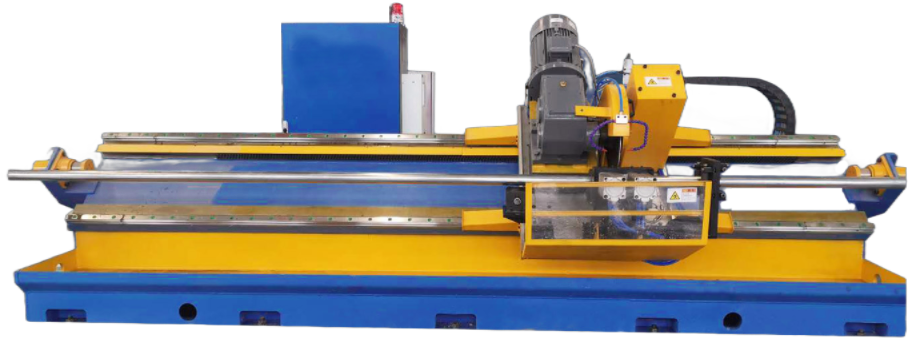Roller Shutter Door Production Equipment for Efficient and Durable Manufacturing Solutions
The Roller Shutter Door Making Machine Revolutionizing Security and Efficiency
In an era where security concerns are paramount for businesses and homeowners alike, roller shutter doors have emerged as a popular choice for safeguarding properties. These versatile doors are not only robust and durable but also offer convenience and aesthetic appeal. Behind the scenes, the manufacturing of roller shutter doors involves sophisticated machinery known as the roller shutter door making machine. This article delves into the significance, functionality, and benefits of this innovative machine.
Understanding Roller Shutter Doors
Roller shutter doors are multi-functional closures that can be found in commercial and residential settings. They are designed to roll up and down, providing an efficient way to secure storefronts, warehouses, garages, and even homes. Made from various materials like aluminum, steel, and PVC, these doors offer a blend of strength, lightweight design, and resistance to corrosion.
The manufacturing process of roller shutter doors requires precision and technology, where the roller shutter door making machine plays a pivotal role. These machines automate the production process, allowing for high-quality output while minimizing labor costs and maximizing efficiency.
The Design and Functionality of the Machine
A roller shutter door making machine typically consists of several key components that work in unison to produce the final product. These include
1. Coil Feed System This is the starting point, where raw material, often in a coil form, is fed into the machine. The width and thickness of the coil can vary depending on the design specifications of the roller shutter door.
2. Uncoiler The uncoiler unwinds the coil smoothly, ensuring a constant flow of material into the forming stations without causing any disruptions.
3. Roll Forming System This is the heart of the machine. The coil is passed through various rollers that gradually shape it into the desired profile of the shutter slat. This process is highly precise and can be adjusted to create different designs and thicknesses.
4. Cutting Station Once the slats are formed, they are cut to size based on the specifications for the final door dimensions. This station ensures that all cuts are straight and accurate.
roller shutter door making machine

5. Assembly Station Following cutting, the slats are assembled into panels. Additional components such as guides, ends, and locking mechanisms are attached in this stage.
6. Finishing Station Finally, the finished doors can undergo additional processes such as painting, powder coating, or galvanizing to enhance their appearance and durability.
Advantages of Using Roller Shutter Door Making Machines
1. Increased Production Efficiency The automation involved in roller shutter door manufacturing significantly speeds up the production process compared to traditional methods. This allows manufacturers to meet higher demand without compromising on quality.
2. Customization Modern machines are equipped with advanced control systems, enabling manufacturers to easily switch between different designs and specifications. This flexibility caters to the diverse needs of customers.
3. Cost-Effectiveness By reducing the labor intensity and increasing production rates, businesses can significantly lower their operational costs. Moreover, the consistent quality of the doors minimizes wastage and ensures a reliable product.
4. Quality Control With automated systems, quality control is enhanced throughout the production process. Machines can be calibrated to produce uniform slats, ensuring that the final product meets industry standards and client expectations.
5. Safety Features Advanced machines come with safety mechanisms to protect operators, making the workplace safer. Features such as emergency stop buttons and shields help prevent accidents during operation.
Conclusion
The roller shutter door making machine epitomizes the intersection of technology and manufacturing, offering solutions to meet the rising demand for security products in various sectors. With its multiple benefits—from increased efficiency to cost savings—this machine is indispensable for manufacturers aiming to thrive in a competitive market. As technology continues to evolve, we can expect further innovations in door manufacturing that will enhance security solutions while addressing consumer needs for customization and aesthetic appeal.
-
High Frequency Straight Seam Welded Pipe Production Line-BzZhou Xinghua Machinery Equipment Manufacturing Co., LTD.|Precision Welding, High EfficiencyNewsJul.30,2025
-
High Frequency Straight Seam Welded Pipe Production Line|BzZhou Xinghua|Precision Welding&EfficiencyNewsJul.30,2025
-
High Frequency Straight Seam Welded Pipe Production Line - BzZhou Xinghua|Precision Engineering&EfficiencyNewsJul.30,2025
-
High-Frequency Straight Seam Welded Pipe Production Line-BzZhou Xinghua Machinery Equipment Manufacturing Co., LTD.NewsJul.30,2025
-
High-Frequency Straight Seam Welded Pipe Production Line-BzZhou Xinghua Machinery Equipment Manufacturing Co., LTD.|Precision Manufacturing, High EfficiencyNewsJul.30,2025
-
High Frequency Straight Seam Welded Pipe Production Line-BzZhou Xinghua Machinery Equipment Manufacturing Co., LTD.|Precision Steel Pipe Manufacturing&Industrial EfficiencyNewsJul.29,2025


